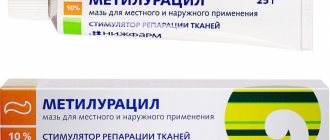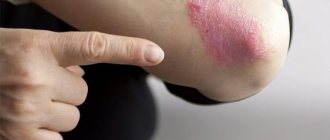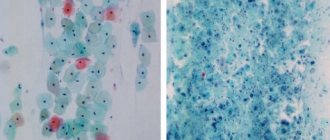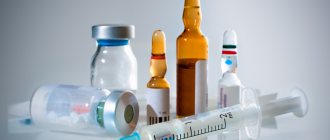How to reduce hot flashes and how to deal with excessive sweating?
To reduce the negative consequences of hormonal disorders during menopause, you need to take appropriate medications, adjust your diet, and adjust your work and rest schedule. However, that's not all. There are some simple rules to reduce the unpleasant symptoms of attacks:
- Avoid going to the bathhouse and sauna. Hot air in steam rooms causes excessive sweating.
- Spend less time outside on hot days, and also stay as far as possible from heat sources - fireplaces, stoves, heaters, bonfires.
- Stop smoking, eating hot, fatty and spicy foods, coffee, alcohol and sweets.
- A woman's diet during menopause should include more fresh fruits and vegetables, dairy products, cereals, wheat bran, chicken eggs, and nuts.
These products have a beneficial effect on female hormonal levels, which helps reduce the symptoms of menopause. It is also worth including foods rich in so-called phytohormones in your diet. In their composition they are close to human hormones, but are not as effective. Eat: coconut, soybean and olive oil, lentils, flax seeds, garlic, chickpeas, beans, barley, rye. - Drink at least 1.5 liters of water per day. Due to increased sweating during menopause, the body quickly loses fluid, so it must be replenished in a timely manner.
- Do not wear synthetic clothing. It is better to give preference to cotton, silk and linen items. The exception is fleece clothing: this artificial material dries quickly and provides the necessary moisture removal.
- Avoid outfits with high collars. Choose clothes with a neckline and cutouts near the neck.
- Change synthetic bedding to natural ones. This will help you sweat less while you sleep.
- If you experience intense hot flashes, you can carry a spare set of clothes with you. If you get very sweaty, you will have the opportunity to change clothes.
- Observe personal hygiene rules. To avoid the unpleasant odor of sweat, it is recommended to use a high-quality antiperspirant that prevents the appearance of unpleasant odor.
- Make time for rest, try to be less nervous and engage in static sports - Pilates, yoga, stretching, callanetics. During this difficult period, regular seaside holidays are highly desirable for the female body, but it is important to avoid hot months (July, August) and choose more comfortable and cooler ones - May, June and September.
Treatment of hot flashes during menopause
Half-month inequality.
This main type of variation is characterized by a periodicity of approximately 143/4 days, which is associated with the rotation of the Moon around the Earth and its passage through successive phases, in particular syzygies (new moons and full moons), i.e. moments when the Sun, Earth and Moon are located on the same straight line. So far we have touched only on the tidal influence of the Moon. The gravitational field of the Sun also affects the tides, however, although the mass of the Sun is much greater than the mass of the Moon, the distance from the Earth to the Sun is so greater than the distance to the Moon that the tidal force of the Sun is less than half that of the Moon. However, when the Sun and Moon are on the same straight line, either on the same side of the Earth or on opposite sides (during the new moon or full moon), their gravitational forces add up, acting along the same axis, and the solar tide overlaps with the lunar tide. Likewise, the attraction of the Sun increases the ebb caused by the influence of the Moon. As a result, the tides become higher and the tides lower than if they were caused only by the Moon's gravity. Such tides are called spring tides.
When the gravitational force vectors of the Sun and the Moon are mutually perpendicular (during quadratures, i.e. when the Moon is in the first or last quarter), their tidal forces oppose, since the tide caused by the attraction of the Sun is superimposed on the ebb caused by the Moon. Under such conditions, the tides are not as high and the tides are not as low as if they were due only to the gravitational force of the Moon. Such intermediate ebbs and flows are called quadrature. The range of high and low water marks in this case is reduced by approximately three times compared to the spring tide. In the Atlantic Ocean, both spring and quadrature tides are usually delayed by a day compared to the corresponding phase of the Moon. In the Pacific Ocean, such a delay is only 5 hours. In the ports of New York and San Francisco and in the Gulf of Mexico, spring tides are 40% higher than quadrature ones.
What to take for hot flashes during menopause?
Most often, doctors prescribe menopausal hormone therapy (MHT) to patients. Normalizing hormonal levels by taking such drugs not only reduces sweating, but also improves psycho-emotional state, helps cope with mood swings, increases performance and optimizes concentration.
However, it must be taken into account that drugs that compensate for the lack of estrogen can activate the launch of developing oncological diseases - in particular, breast, endometrial or ovarian cancer and aggravate chronic diseases and the risk of thrombosis. Therefore, treatment with hormonal drugs should occur exclusively according to the regimen drawn up by the doctor.
In recent years, it has become possible to replace the use of traditional tablet medications with the use of hormonal patches, gel forms, and intrauterine complexes.
They are considered less dangerous in terms of the possibility of venous thrombosis.
Solar parallax inequality.
The period of manifestation of this inequality is one year. Its cause is the change in the distance from the Earth to the Sun during the orbital movement of the Earth. Once for each revolution around the Earth, the Moon is at its shortest distance from it at perigee. Once a year, around January 2, the Earth, moving in its orbit, also reaches the point of closest approach to the Sun (perihelion). When these two moments of closest approach coincide, causing the greatest net tidal force, higher tidal levels and lower tidal levels can be expected. Likewise, if the passage of aphelion coincides with apogee, lower tides and shallower tides occur.
Hot flashes during menopause: treatment without hormones
Expert opinion
Many women cannot take hormonal medications due to certain health conditions. For example, if there is a risk of breast cancer, a tendency to form venous blood clots, cerebrovascular accident (stroke) and heart attack, hormone replacement therapy is not recommended, since the potential risks from it may be higher than the benefits.
Obstetrician-gynecologist of the highest category Oksana Anatolyevna Gartleb
To mitigate the intensity of menopause symptoms, not only hormone replacement therapy, but also other drugs are used. Instead of hormones, you can use the following:
Drugs that normalize blood pressure
During menopause, changes in the water-salt balance occur, resulting in fluid retention in the body and an increase in blood volume. This leads to increased blood pressure during hot flashes. Taking medications that lower blood pressure helps reduce sweating and the feeling of heat during such conditions.
Sedatives and antidepressants
These medications, given in small doses, help reduce the stress caused by hot flashes. In addition, taking antidepressants and sedatives in some cases reduces the frequency and intensity of hot flashes by normalizing the condition of blood vessels.
Expert opinion
Remember that antidepressants can be quite harsh on your health and may cause some side effects. Therefore, their prescription and selection of the appropriate dosage should be handled exclusively by a specialized specialist.
Obstetrician-gynecologist of the highest category Oksana Anatolyevna Gartleb
Vitamin and mineral complexes, dietary supplements
During menopause, it is recommended to take complexes rich in retinol, tocopherol, ascorbic acid, B vitamins, vitamin D, calcium, magnesium, boron.
Dietary supplements based on phytoestrogens. Phytohormones include coconut oil, chamomile, calendula, ginseng root, grapes, dates, pomegranates, red clover, alfalfa, flax, licorice, etc.
Semiannual inequality.
Its cause is the revolution of the Earth around the Sun and the corresponding change in the declination of the Sun. Twice a year for several days during the equinoxes, the Sun is near the celestial equator, i.e. its declination is close to 0°. The Moon is also located near the celestial equator for approximately 24 hours every half month. Thus, during the equinoxes there are periods when the declinations of both the Sun and the Moon are approximately 0°. The total tidal-generating effect of the attraction of these two bodies at such moments is most noticeably manifested in areas located near the earth's equator. If at the same time the Moon is in the new moon or full moon phase, the so-called. equinoctial spring tides.
Hot flashes during menopause: treatment with folk remedies
Not only traditional medicines, but also traditional medicine methods help to cope with fever and sweating during menopause. They should not be considered as the main means of therapy, but they can act as effective additional means.
Various herbs are used to combat the unpleasant symptoms of menopause. You can prepare decoctions and infusions from them, for example:
- Hawthorn fruits and flowers. Rinse 5 g of prepared raw materials, place in a thermos and pour a glass of boiling water. Leave for an hour. Take half a glass 2 times a day before meals. The infusion not only reduces the frequency and intensity of hot flashes, but also improves heart function and vascular condition.
- Red clover. Red clover belongs to the category of phytoestrogens, so this plant is actively used to reduce hot flashes. To prepare the infusion you need to take 2 tbsp. dry crushed red clover herb, place in a thermos and pour a glass of boiling water, leave to infuse for 10 hours. Take the resulting infusion before meals, 50 ml.
- Sage. It is useful to take a decoction. To prepare it, you need to take 1 tbsp. dry sage, pour 1.5 tbsp. boiling water and simmer for 5 minutes over low heat. Then cool the broth, strain and drink as tea throughout the day.
- Red brush root (rhodiola tetrapartite). Before taking products based on red brush, you should consult your doctor, as this plant is contraindicated for women suffering from hypertension. Pour the dried crushed root (1 tbsp) into a glass of water and boil for a quarter of an hour. Cool the broth, strain and take 100 ml before meals three times a day.
- Borovaya uterus.
This plant helps to compensate for the lack of estrogen, as it belongs to the category of phytohormones.To prepare a decoction of boron uterus, you need to take a tablespoon of the dry plant, pour a glass of boiling water over it and simmer over low heat for 5 minutes. Then strain, cool the broth and drink 100 ml before meals three times a day.
- Dry rosemary. To prepare the decoction, take 1 tbsp. raw materials, pour a glass of boiling water and boil for a quarter of an hour. Then strain, cool and take the resulting product before meals three times a day.
Menopause in a woman without hot flashes
Semi-diurnal effect.
Usually within a day, due to the main tidal force - the rotation of the Earth around its axis - two complete tidal cycles are formed. When viewed from the North Pole of the ecliptic, it is obvious that the Moon rotates around the Earth in the same direction in which the Earth rotates around its axis - counterclockwise. With each subsequent revolution, a given point on the earth's surface again takes a position directly under the Moon somewhat later than during the previous revolution. For this reason, both the ebb and flow of the tides are delayed by approximately 50 minutes every day. This value is called lunar delay.
Menopause without hot flashes: reality or dream?
Unfortunately, most women experience the unpleasant symptoms of menopause firsthand. However, each of them has a choice: to come to terms with the manifestations of this condition or to alleviate it by taking the right medications.
One of the best remedies for hot flashes during menopause is Klimafemin.
This drug was developed by specialists from the pharmaceutical company VERTEX and has the necessary documents and certificates. The product is distinguished by a balanced composition, which includes natural components: phytoestrogen genistein, coenzyme Q10, grape seed extract and vitamin E. As a result of the use of “Climafemin”, the frequency and intensity of hot flashes decreases, sweating decreases, and the emotional background improves. Sources:
- Menopausal syndrome. Smetnik V.P., Tkachenko N.M., Glezer G.A. and others // M. - 1988. - P. 286.
- Depressive disorders in peri- and postmenopausal women. Yureneva S.V., Kamenetskaya T.Ya. // Journal of gynecology. - 2007. - 9(2). pp. 5-12.
- Mental disorders in women during menopause. Tyuvina N.A. // M.: Kronpress. - 1996. - P. 237.
- https://cyberleninka.ru/article/n/myagkiy-klimaks
- https://cyberleninka.ru/article/n/ispolzovanie-bad-dlya-korrektsii-klinicheskih-proyavleniy-perimeno…
- https://cyberleninka.ru/article/n/sovremennye-podhody-k-diagnostike-prognozirovaniyu-techeniya-i-lec…
Daily inequality.
The period of this inequality is 24 hours 50 minutes. The reasons for its occurrence are the rotation of the Earth around its axis and a change in the declination of the Moon. When the Moon is near the celestial equator, the two high tides on a given day (as well as the two low tides) differ slightly, and the heights of morning and evening high and low waters are very close. However, as the Moon's north or south declination increases, morning and evening tides of the same type differ in height, and when the Moon reaches its greatest north or south declination, this difference is greatest. Tropical tides are also known, so called because the Moon is almost above the Northern or Southern tropics.
The diurnal inequality does not significantly affect the heights of two successive low tides in the Atlantic Ocean, and even its effect on the heights of the tides is small compared to the overall amplitude of the fluctuations. However, in the Pacific Ocean, diurnal variability is three times greater in low tide levels than in high tide levels.
Popular questions
Hello!
Constant hot flashes tormented me. I started drinking Gynocomfort Klimafemin. It helped right away. But it turned out that it was not available in any pharmacy! It was difficult to buy only one package. Has this product been discontinued? Hello! Gynocomfort climafemin continues to be produced. You can purchase it in pharmacies that sell other VERTEX products.
Hello, I have up to 10 hot flashes per day, more at night. A year ago I took the drug Femoston 2 for three months, it helped, everything was fine for six months, but it all started again. Is it possible to correct this condition without hormonal drugs?
Hello! The Ginocomfort line of drugs includes the drug Climafemin. It contains antioxidants and phytoestrogens, which will correct the vegetative manifestations of menopause. If there is no effect after 1 month of use, you should consult your doctor again.
Hot flashes, insomnia, what to do? I take Klimanalin, it doesn’t help.
Hello! Vivid vegetative manifestations in the menopause are caused not only by hormonal changes, but also by a possible combination of thyroid pathology - hypothyroidism, vertebrobasilar insufficiency. Therefore, it is advisable: consultation with an endocrinologist or neurologist. OMT ultrasound, flora smear, cytology, which will allow prescribing menopausal hormone therapy in the absence of contraindications. At this stage, pending examination results, you can add Gynocomfort climafemin to treatment. The drug contains phytoestrogens and antioxidants, which has a beneficial effect on well-being and eliminates the symptoms of menopause. The drug is taken 1 t once a day for 3 months.
I am 49 years old and suffered from frequent hot flashes. How to prevent them?
Hello!
These are manifestations of menopausal syndrome associated with the extinction of ovarian function. At this stage, I recommend using a herbal-based drug that allows you to stop bursts of vegetative reactions - Ginocomfort Klimafemin 1 t once a day for 3 months. During this time, conduct an examination: ultrasound OMT, they say. glands, flora smear, oncocytology, oak, lipid spectrum, FSH, TSH levels. Consult a therapist and other related specialists if you have chronic diseases that would be a contraindication for prescribing menopausal hormone therapy. This will help the obstetrician-gynecologist correctly select further treatment. For an accurate diagnosis, contact a specialist
The climacteric period (menopause, menopause) is a physiological period of a woman’s life, during which, against the background of age-related changes in the body, involutionary processes in the reproductive system dominate. It is characterized by a gradual decrease and “switching off” of ovarian function due to the depletion of the supply of eggs and the development of symptoms of estrogen deficiency. Up to 60–80% of peri- or postmenopausal women experience vasomotor symptoms, the onset of which begins during the transition period and reaches its peak approximately a year after menopause [1, 2].
A sudden feeling of heat in the upper body, especially on the face, neck and chest, is called a hot flash. These episodes last approximately 1 to 5 minutes and are characterized by sweating, flushing, chills, a clammy feeling, anxiety, and sometimes rapid heartbeat. Vasomotor symptoms can also disrupt sleep and cause chronic insomnia in some women [2, 3]. Hot flashes vary in frequency and duration: studies show that 87% of women experience hot flashes daily, with approximately 33% experiencing hot flashes 10 times a day or more [1]. These symptoms significantly reduce the quality of life of women and force them to seek medical help.
The pathophysiology of hot flashes has not yet been fully elucidated. It is known that hot flashes occur in women taking tamoxifen for breast cancer, after oophorectomy, as well as in hypogonadism in men during androgen blocking therapy for prostate cancer [4, 5]. It is clear that changes in the level of sex hormones play a major role and are the cause of the occurrence of vasomotor symptoms, which is confirmed by their disappearance when taking estrogen. However, a decrease in estrogen levels and a natural increase in follicle-stimulating hormone (FSH) levels through feedback mechanisms alone cannot explain the occurrence of hot flashes, as well as the variability in the severity and frequency of symptoms, since they do not correlate with the level of sex hormones. Additionally, despite low estrogen levels in postmenopause, some women experience symptoms while others do not. The main discussion is about disruption of thermoregulation processes in the hypothalamus due to estrogen deficiency, which leads to a narrowing of the thermoregulatory zone and an increase in its sensitivity to small changes in body temperature.
Moreover, back in 1979, experiments [6, 7] showed that hot flashes are closely associated with impulses of luteinizing hormone (LH) activity. Therefore, research in recent decades has been focused specifically on the central mechanisms of regulation of reproductive function. For the first time, the quintessence of accumulated knowledge on the nature of hot flashes, with an emphasis on central regulatory mechanisms, was reported at the XV International Congress on Menopause in Prague, when this article had already been accepted for publication.
In 1977, the groups of Schally and Guillemin were awarded the Nobel Prize for the discovery of gonadotropin-releasing hormone (GnRH). In 1978, E. Knobil [8] demonstrated the importance of pulsatory GnRH secretion for adequate activation of the hypothalamic-pituitary-ovarian axis (HPO-axis) during puberty and its cyclic function during reproductive age. The release of GnRH is pulsatile in nature, and it clearly correlates with pulses of LH activity in the peripheral blood [9, 10].
Feedback mechanisms continue to operate in postmenopause, so naturally, in response to a decrease in estrogen synthesis by the ovaries, the level of gonadotropins increases. Despite the well-defined role of GnRH during puberty and maintenance of adult reproductive function, little is known about how GnRH release changes during aging and whether it plays a role in the involution of the female reproductive system [11].
It is known that GnRH release in aging primates and women is not directly controlled by gonadotropin levels [12–14]. Thus, in a study by M. Woller et al. [14] showed an increase in LH pulsatile activity with aging in female monkeys. In women, gonadotropin levels were higher in early postmenopause compared to premenopause [15–17]. In addition, the pituitary gland itself can undergo aging processes, for example, changing sensitivity to GnRH, which also affects the synthesis of gonadotropins. Therefore, it is important to directly study the processes of GnRH pulsatile activity with aging. Due to the inaccessibility of GnRH neuron terminals and the inability to detect GnRH peptide in peripheral blood, it was not possible to conduct such a study in women. Experiments on macaques showed that pulsatile secretion of GnRH persisted in different age groups, but postmenopausal individuals were characterized by a significant increase in the concentration of GnRH and the presence of pulses of extremely large amplitude, while the frequency of the pulses remained the same. In one monkey, estrogen administration reduced the amplitude of pulsatile GnRH release [11].
Experiments on female monkeys also showed that the use of estrogen replacement therapy reduced GnRH release [18] and GnRH gene expression [19, 20]. Administration of estrogen to postmenopausal women leads to a decrease in LH and FSH levels, and the response in late postmenopausal women was greater compared to early postmenopausal women. This once again proves that the negative feedback between estrogens and central regulatory mechanisms is not only maintained, but even strengthened with aging [12, 21].
However, the temporal relationship between hot flashes and peaks in GnRH/LH secretion is not causal. When estrogens were prescribed and then withdrawn, hot flashes in women persisted even after surgical removal of the pituitary gland [6] or against the background of GnRH agonists, which suppress LH secretion [22, 23]. GnRH itself is also not the cause of vasomotor complaints, since hot flashes continue to occur in patients with Kallmann syndrome despite the absence of GnRH neurons [24]. Since it has been proven that LH impulses are caused by GnRH impulses, and hot flashes are timed to LH impulses, it becomes clear that the mechanism of hot flashes is closely related to the hypothalamic control of GnRH secretion.
Studies in the early 2000s demonstrated that pulsatile GnRH secretion is modulated by a subpopulation of arcuate nucleus neurons expressing estrogen receptor alpha (ERα), neurokinin-3 receptor, kisspeptin, neurokinin B, and dynorphin—the so-called KNDy neurons [25]. One of the striking discoveries of the 21st century in the field of neuroendocrinology was evidence of the participation of kisspeptin and its receptor in the initiation of puberty and the maintenance of reproductive function [26, 27]. Kisspeptin is the main stimulator of GnRH synthesis; its secretion is also pulsating in nature and clearly correlates with GnRH/LH secretion pulses: after each kisspeptin secretion pulse, a GnRH secretion pulse occurs [26, 28]. Neurokinin, together with kisspeptin, has a stimulating effect on GnRH secretion [26]. Dynorphin is an endogenous opioid peptide that mediates the negative feedback between estrogens and GnRH [29].
Kiss1 neurons of the arcuate nucleus of the infundibular region (group of KNDy neurons) participate in the negative feedback between sex steroids and gonadotropins, providing tonic secretion of GnRH, with the participation of dynorphin (suppressor of GnRH synthesis) and neurokinin B (stimulator of GnRH synthesis). They form an autosynaptic feedback loop and modulate the pulsatile secretion of GnRH and, accordingly, the synthesis of LH and FSH [30]. Kiss1 neurons of the rostral part of the third ventricle field play a key role in transmitting the positive feedback of estradiol to gonadotropins, primarily regulating the pulsatile activity of GnRH, in the presence of activated progesterone receptors, which initiates the preovulatory GnRH peak [3, 25, 31] (Fig. 1 ).
Rice. 1. Feedback mechanism in postmenopause when ovarian function is turned off and possible ways of generating hot flashes [3].
In postmenopause, KNDy neurons undergo unusual somatic hypertrophy and express increased levels of transcripts of the kisspeptin and neurokinin B genes [3, 25, 32], the expression of the Kiss1 gene in the infundibular nucleus increases, which increases the secretion of GnRH and LH [32–34]. Animal data suggests changes in postmenopausal KNDy neurons are secondary to estrogen deficiency rather than aging Per se
[3, 32].
When performing ablation of KNDy neurons in the experiment, LH secretion was naturally disrupted. In rats of the control group, ovariectomy naturally led to an increase in LH levels, and the administration of estrogen normalized it. In the main group (ablation of KNDy neurons) after ovariectomy there was no significant increase in LH levels, and it was lower regardless of estrogen administration. In addition, when KNDy neurons were ablated, rats maintained their core body temperature better [3, 25].
It is known that KNDy neurons are adjacent to structures responsible for the regulation of body temperature [3, 35–37], including the median preoptic nucleus, an important component of the thermosensory pathway for protection against overheating. Thus, connections of KNDy neurons with both preoptic structures responding to thermoregulation and with GnRH neurons explain the temporal relationship between hot flashes and pulses of LH secretion in postmenopausal women. Based on the above experiments, it can be argued that it is KNDy neurons that play an important role in the occurrence of hot flashes [3, 25].
It is known that the “gold standard” for relieving vasomotor symptoms is menopausal hormone therapy (MHT), the effectiveness of which reaches 90–95% [38, 39]. During the first 2-3 weeks of taking MHT, hot flashes stop almost completely. According to feedback mechanisms, an increase in the level of estradiol in the blood helps to reduce the hyperactivation of KNDy neurons, reduce the amplitude of pulse secretion of GnRH and the level of gonadotropins. The transmission of hyperexcitation to neighboring hypothalamic structures responsible for temperature and vasomotor manifestations stops.
It should be remembered that MHT, like any drug therapy, has its own indications and contraindications. Thus, MHT is contraindicated in women with a previous heart attack or stroke, or venous thrombosis. In addition, from the standpoint of balancing positive effects and risk profile, the world community recommends that hormone therapy be prescribed for the first time to women no older than 60 years or with menopause lasting no more than 10 years [38, 39]. However, a meta-analysis [40] of 6 studies assessing the natural history of vasomotor symptoms showed that hot flashes persisted in 50% of women 4 years after menopause, and in 10% even after 10 years. How can we help patients with vasomotor complaints who are contraindicated in MHT or for whom it is too late to start it, given that the effectiveness of herbal remedies is on average about 30%, and the effectiveness of serotonin reuptake inhibitors is 50%? Are there other mechanisms to reverse the hyperactivation of KNDy neurons?
The year 2000 was marked by a landmark event in the field of neuroendocrinology - the discovery of gonadotropin-inhibiting hormone (GnIH) [41]. In mammals, the cell bodies of GnRH-synthesizing neurons are located in the dorsomedial region of the hypothalamus, and their axons approach the median eminence and GnRH1 neurons in the preoptic nucleus. Gonadoinhibin inhibits the synthesis and release of gonadotropins due to a direct effect on pituitary gonadotrophs and causes inhibition of the activity of GnRH neurons through its receptor, and also disrupts the pulsatile secretion of GnRH in the hypothalamus [42, 43] (Fig. 2). In addition, the axons of GnIH neurons approach kiss neurons and reduce their activity. Thus, the level and pulsating rhythm of the secretion of GnRH, FSH, and LH depend on the frequency of exposure to kisspeptin and gonadoinhibin [44].
Rice. 2. Central departments for the regulation of reproductive function. The role of melatonin.
According to experiments on ovariectomized mice [45], intravenous administration of GnIH resulted in a significant decrease in plasma LH levels, and intracerebral administration did not affect either the average LH level or the frequency of pulsatile secretion. In a study [46] on cell culture, the use of GnIH did not affect basal secretion, but reduced GnRH-stimulated LH secretion by an average of 25%. In studies, it was noted, according to some authors, that it is the long-term use of GnIH that matters, since a single injection did not give any effect.
According to modern research [47], the activity of GnIH neurons is modulated by both environmental factors and internal factors. One of these factors is endogenous melatonin. In an experiment in birds, the use of melatonin increases the expression of gonadoinhibin mRNA and the release of GnIH itself in the brain. There is a subtype of melatonin receptor Mel1c on GnIH neurons of quails. Thus, melatonin directly acts on GnIH neurons to increase the secretion and release of gonadoinhibin. The release of GnIH increases during periods of short daylight hours, when nocturnal melatonin production increases [48] (see Fig. 2). The main volume of melatonin is formed in the secreting cells of the pineal gland - pinealocytes.
In 2015, the drug Pineamin was registered in Russia (Geropharm LLC). The active ingredients of Pineamin are pineal gland polypeptides PPG (Polypeptides of Pineal Gland), which restore the normal functional density of pinealocytes and stimulate the synthesis of endogenous melatonin. After intramuscular administration of the drug, PPG polypeptides enter the inferior vena cava, bypassing the portal system, enter the right heart and then into the arterial circle along the branches of the middle and posterior cerebral arteries, bypassing the blood-brain barrier, and immediately enter pinealocytes through axovasal synapses, where they activate the synthesis of melatonin and serotonin. As discussed above, melatonin stimulates the activity of GnIH neurons and the synthesis of GnIH, which in turn helps to eliminate excessive hyperactivation of KNDy neurons, GnRH neurons and adjacent parts of the median preoptic nucleus. Accordingly, the neurovegetative manifestations of menopausal syndrome are stopped.
The effectiveness of Pineamin was studied in a multicenter placebo-controlled study led by V.N. Prilepskoy et al. [49] with the participation of 120 women: Pineamin 2 course group - 60 patients, Pineamin 1 course group - 30, placebo group - 30. The study demonstrated a statistically significant decrease in the manifestations of menopausal complaints on the scale of the modified Kupperman menopausal index in comparison with the placebo group. At the same time, it was shown that the injection form of Pineamin has a high ability to retain the effect, which makes it possible to carry out repeated courses no more than 2-3 times a year.
There were no statistically significant differences in the incidence of adverse events between the groups (Pineamine; placebo): endometrial thickness according to ultrasound, and the condition of the cervix did not change.
Also, there was no statistical difference between the Pineamin and placebo groups when measuring the level of female sex hormones: estradiol, FSH, LH, prolactin.
When assessing the parameters of the blood coagulation system (fibrinogen, prothrombin index, activated partial thromboplastin time and INR), it was found that the study drug Pineamin had no effect on them and their level was within normal limits.
When assessing the biochemical parameters of the blood, it was revealed that there was no effect on lipid spectrum indicators, as well as such metabolic indicators as glucose, creatinine, alanine, aspartate transferase and bilirubin.
Thus, despite the fact that new links in the central departments of regulation of the function of the reproductive system and the main pathogenetic stages of the occurrence of vasomotor complaints have been discovered in the last two decades, today the doctor’s arsenal already has a drug with an innovative mechanism that makes it possible to relieve hot flashes with a favorable safety profile.
The authors declare no conflict
of interest .
Bor.
When water, set in motion under the influence of a high tide, is limited in its movement by a narrow channel, a rather steep wave is formed, which moves upstream in a single front. This phenomenon is called a tidal wave, or bore. Such waves are observed on rivers much higher than their mouths, where the combination of friction and river current most impedes the spread of the tide. The phenomenon of boron formation in the Bay of Fundy in Canada is known. Near Moncton (New Brunswick), the Pticodiac River flows into the Bay of Fundy, forming a marginal stream. At low water its width is 150 m, and it crosses the drying strip. At high tide, a wall of water 750 m long and 60–90 cm high rushes up the river in a hissing and seething vortex. The largest known pine forest, 4.5 m high, is formed on the Fuchunjiang River, which flows into Hanzhou Bay. See also BOR.
Menopausal syndrome, symptoms
During menopause, a woman may experience a number of unpleasant sensations. Symptoms can vary in intensity and be present in different combinations. They are divided into several groups.
Neurovegetative symptoms:
- tides;
- sweating;
- changes in blood pressure;
- chilling;
- nausea, abdominal pain;
- dizziness, headaches;
- heartache;
- palpitations.
Metabolic-endocrine symptoms:
- swelling, weight gain;
- engorgement of the mammary glands, mastopathy;
- flatulence;
- vaginal dryness, spotting, bleeding;
- skin atrophy, itching;
- urinary incontinence, painful urination;
- pain in bones and joints;
- increased blood cholesterol levels.
Psycho-emotional symptoms:
- irritability;
- decreased libido;
- sudden mood changes;
- tearfulness;
- aggressiveness;
- anxiety;
- depression, apathy;
- forgetfulness, deterioration of concentration;
- insomnia;
- inexplicable sensations (tingling, goosebumps, etc.).
Femicaps Easy Life
The active ingredient of Femicapsa Or Life is an extract of the fruits of the sacred vitex. In addition, the composition contains evening primrose oil, passionflower flowers, vitamins E and B6. In addition to treating menopause, the drug is also prescribed for gynecological problems caused by hormonal imbalance, mammological diseases and menstrual irregularities. "Femicaps Easy Life" improves overall well-being, strengthens the immune system and nervous system. The drug has virtually no contraindications or side effects; for a full course of three months, one package of the herbal remedy is enough. Among the disadvantages of Femicapsa Easy Life are possible allergic reactions to the components of the drug, as well as its high cost.
Femicaps Easy Life
Hankintatukku Oy, Finland
Femicaps Easy Life is recommended for the correction of a number of gynecological diseases in women caused by hormonal imbalance, as a general tonic, an additional source of magnesium, vitamins B6 and E.
from 1636
489
- Like
- Write a review
Photos from open sources
Nutrition during menopause
Float rod.
Such foot rods are used where constant waves or shallow swell make it difficult to determine the level on a fixed scale. Inside a containment well (a hollow chamber or pipe) mounted vertically on the seabed is a float, which is connected to a pointer mounted on a fixed scale or to a recorder stylus. Water enters the well through a small hole located well below the minimum sea level. Its tidal changes are transmitted through the float to measuring instruments.
Reversible waterfall
(reversing direction) is another phenomenon associated with tides in rivers. A typical example is the waterfall on the Saint John River (New Brunswick, Canada). Here, through a narrow gorge, water during high tide penetrates into a basin located above the low water level, but slightly below the high water level in the same gorge. Thus, a barrier arises, flowing through which water forms a waterfall. During low tide, the water flows downstream through a narrowed passage and, overcoming an underwater ledge, forms an ordinary waterfall. During high tide, a steep wave that penetrates the gorge falls like a waterfall into the overlying basin. The backward flow continues until the water levels on both sides of the threshold are equal and the tide begins to ebb. Then the waterfall facing downstream is restored again. The average water level difference in the gorge is approx. 2.7 m, however, at the highest tides, the height of the direct waterfall can exceed 4.8 m, and the reverse one - 3.7 m.







